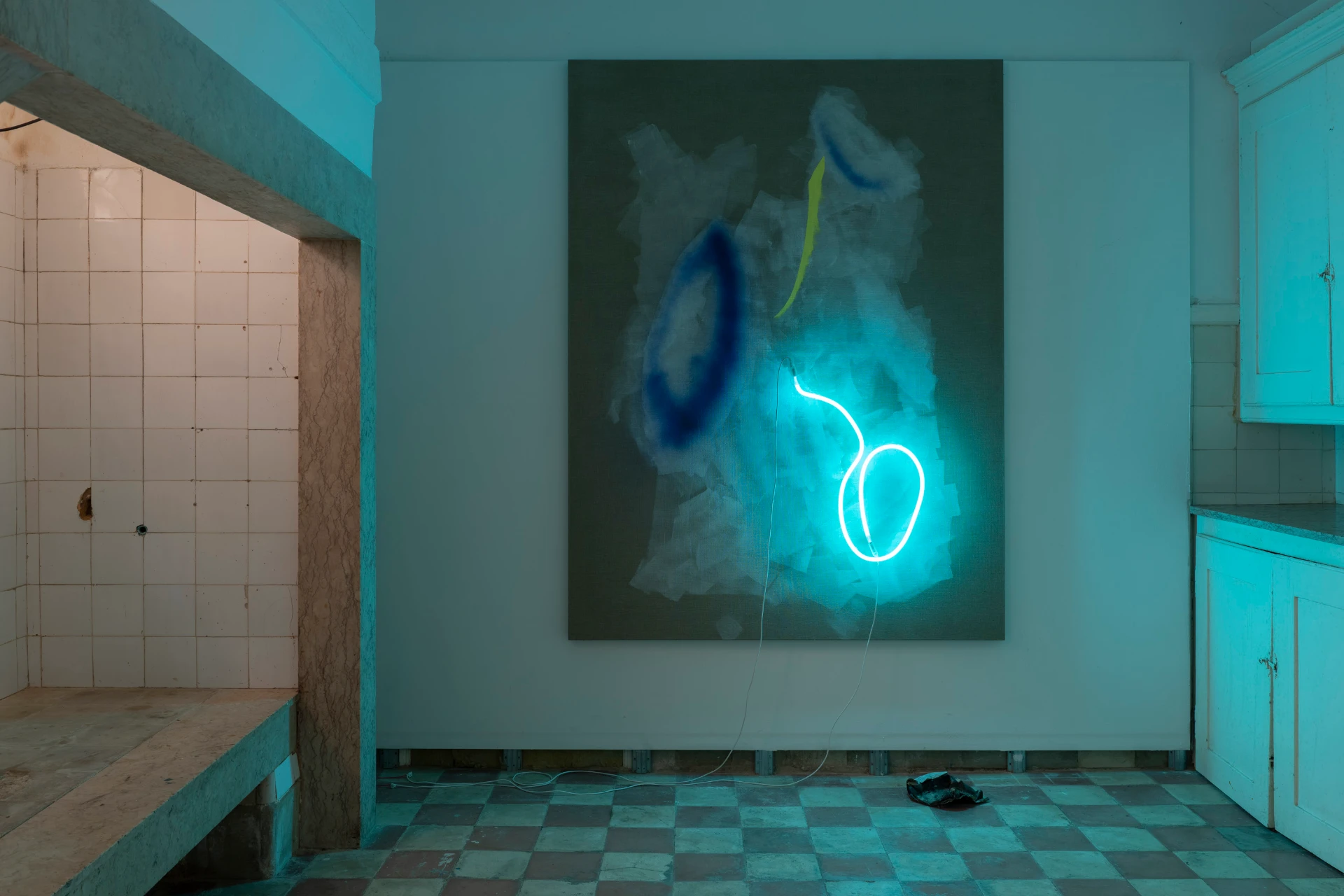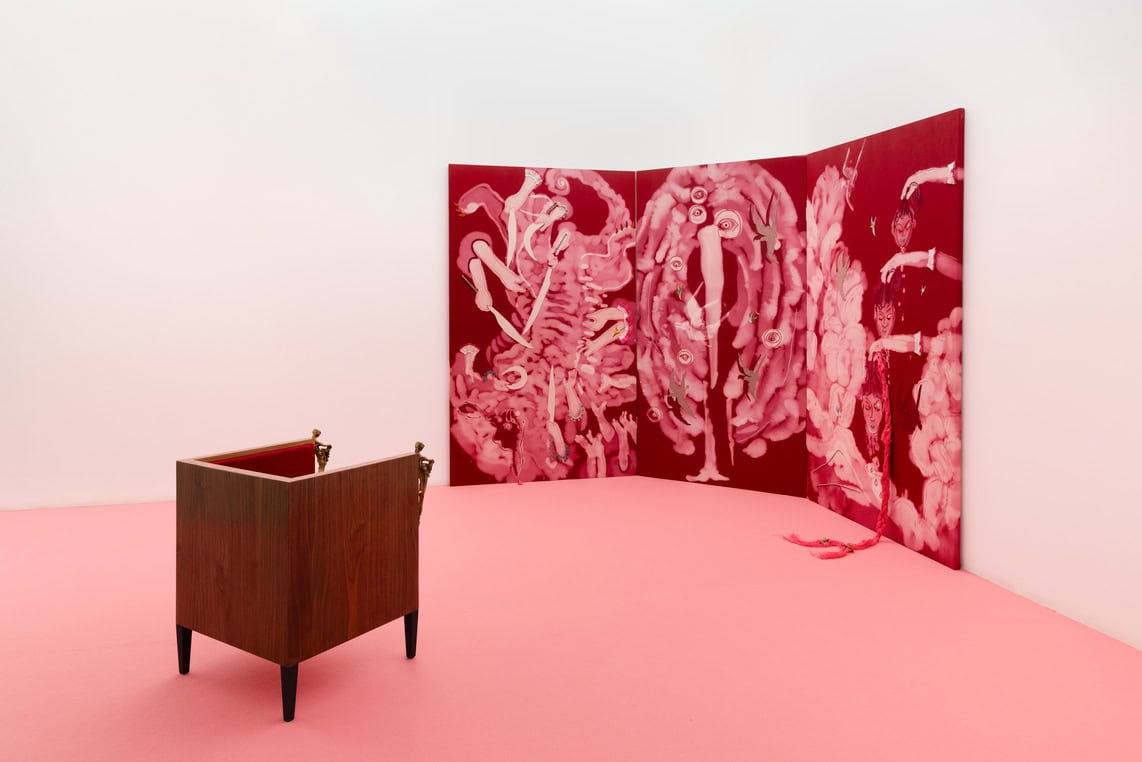article
In the Mouth of a Flowering Ghost at Figura Avulsa
It was an exceptionally hot day in July when I arrived to see the new exhibition at Figura Avulsa. As I entered the building that houses this artist-run space, I was met with an immediate sense of relief. Not only was I cordially greeted by Ana Cardoso – the founder of Figura Avulsa – and the exhibiting artists Carlos Noronha Feio and Mirna Bamieh, but I was also comforted by the cool, humid air held within the thick, old walls of a former private home. It felt as though a giant ancient creature had swallowed me and was now resting in its underbelly.
Figura Avulsa is an independent project envisioned by Cardoso to showcase artists working across geographies and diverse media, including installation, painting, research-based art, performance, text, sound, and video. The name – Figura Avulsa – was inspired by a small azulejo tile panel discovered in the building, composed of leftover tiles arranged into a kaleidoscopic composition of fragmented patterns and characters rather than a single image. In Portuguese, ‘figura avulsa’ refers to a "standalone figure" – a term used for individual tiles that could function autonomously or, when assembled, contribute to a larger visual narrative. Much like the tiles it references, the project brings together distinct voices and practices into a loosely woven structure, encouraging a shared experience shaped through collaboration and mutual exchange.
In the Mouth of a Flowering Ghost is a duo show conceived by Lisbon-based artists Carlos Noronha Feio and Mirna Bamieh with Ana Cardoso. The exhibition begins in a former kitchen – the first space that Figura Avulsa occupies in the building – a setting that closely resonates with Bamieh’s ongoing research interest. Ceramic and mixed-media objects from her recent projects Sour Things: Kitchen (2023) and Bitter Things (2024) are dispersed intimately across the room. In this body of work, Bamieh addresses the political domain of produce and food preservation methods, such as fermentation, as well as domestic environments, reflecting on the contemporary human condition informed by temporaneity, displacement, isolation, and conflict.
However, it is not the ceramic pieces resembling bruised fruit or a hand gripping dough that dominate the former kitchen, as overly direct parallels feel misplaced within this exhibition. It is rather Bamieh’s video A Brief Commentary on Almost Everything (2012) – a documentation of a single yawn unfolding in slow motion. Suspended in various stages of transition, the changing facial expressions of the artist open up a range of interpretation: what is it that this mouth is performing? Is she yawning, speaking, anticipating a kiss, singing, or perhaps screaming?
Across the room, facing the video, is Noronha Feio’s new large-scale abstract work In the Mouth of a Flowering Ghost (2025) which adopted the title of the show. This expanded painting features a curved neon tube that loosely resembles a tongue, casting a pale blue halo across the raw canvas, marked with translucent white and occasional touches of colour. In his approach to abstraction, Noronha Feio resists orchestration and linearity. Instead, his practice embraces disorder and fluidity, seeking not to direct interpretation but to stage an encounter in which meaning remains open and unstable. He constructs the environment for such an experience through seemingly effortless, accidental strokes of colour – painted or shaped from neon – that challenge the gaze and disrupt the surface, or, in the case of his sculptural works, extend into space. One such object A cobra, o vento, e o poder rosa (2021) is installed in the inner yard, where the exhibition continues.
The delicate glass of Noronha Feio’s sculpture rests on a cushion of moss and lichens, which bloom across the stone surfaces of the yard. In her essay Establishing New Worlds: The Lichens of Petersham, American mycologist Anne Pringle refers to lichens as ecological ghosts – remnants of symbiotic relationships between fungi and photosynthetic organisms. These partnerships may persist beyond the disappearance of one partner, leaving behind a structure shaped by former connection. “A fungal body once partnered with an alga now gone, the contours of their former intimacy still visible on stone.”
Echoing the surrounding textures of the yard are Bamieh’s new ceramic wall piece and an object from her Grieving in Colours (2024) series, featuring sagging, mould-covered oranges. The ambiguity of these works is unsettling – the opulence of the gold-laced glazes contrasts with the forms and finishes that signal decay. In this project the orange appears as a central symbolic element – once widely cultivated and traded from Jaffa, the artist’s paternal place of origin, it reflects on grief and trauma by speaking to Palestinian connection to land and cultivation being disrupted by forced resettlement.
In the Mouth of a Flowering Ghost features another of Bamieh’s sculptures created for the exhibition: a site-specific, seven-metre line of oversized ceramic cloves suspended above the old cistern at the centre of the yard. In her ongoing series of suspended sculptures Sour Cords (2024), Bamieh considers sun-drying both as a method of preservation and a symbolic gesture: the removal of water, the source of life, transforms the plants while reinforcing their capacity to endure and remain intact until more favourable conditions return. As the dried cloves – a traditional symbol of good luck and prosperity – hover just above the surface of the water, they convey a soothing message: “better times may not be that far off.”
When I ask about the curator behind the exhibition, both artists reply that it was the space itself that assumed this role, guiding their narrative through reflections on non-linear time, states of transition, fluidity, and non-human agency, a perfect setting for a ghostly presence. The ghost I was introduced to by Mirna and Carlos at Figura Avulsa was kind and welcoming, even if slightly melancholic.
In the Mouth of a Flowering Ghost is on view at Figura Avulsa in Lisbon until 21 July, 2025, by appointment.
ADVERTISING
Previous
article
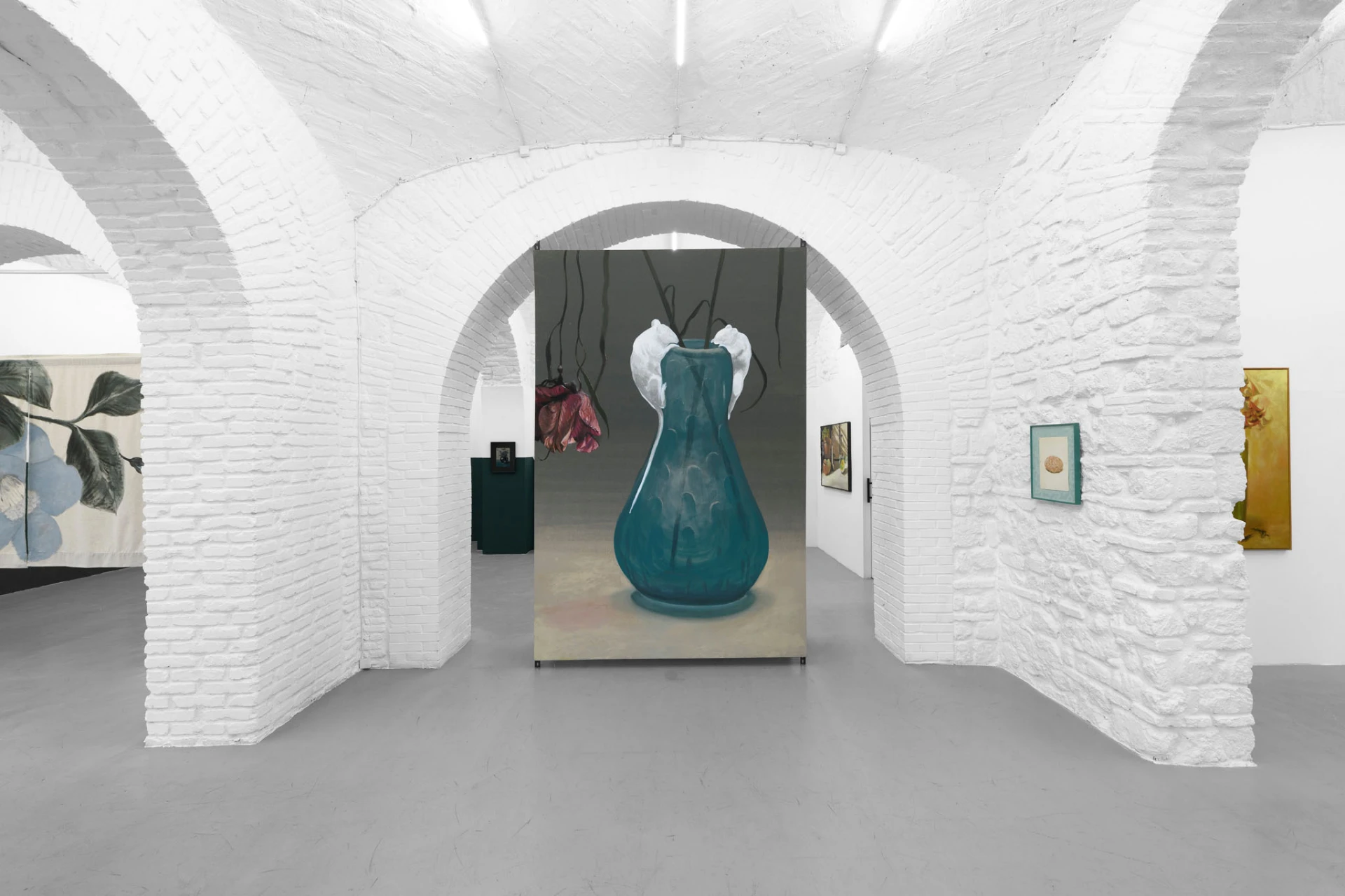
14 Jul 2025
Hidden Aegis: Thomas Braida in Rome
By Diogo E S Dietl
Next
article
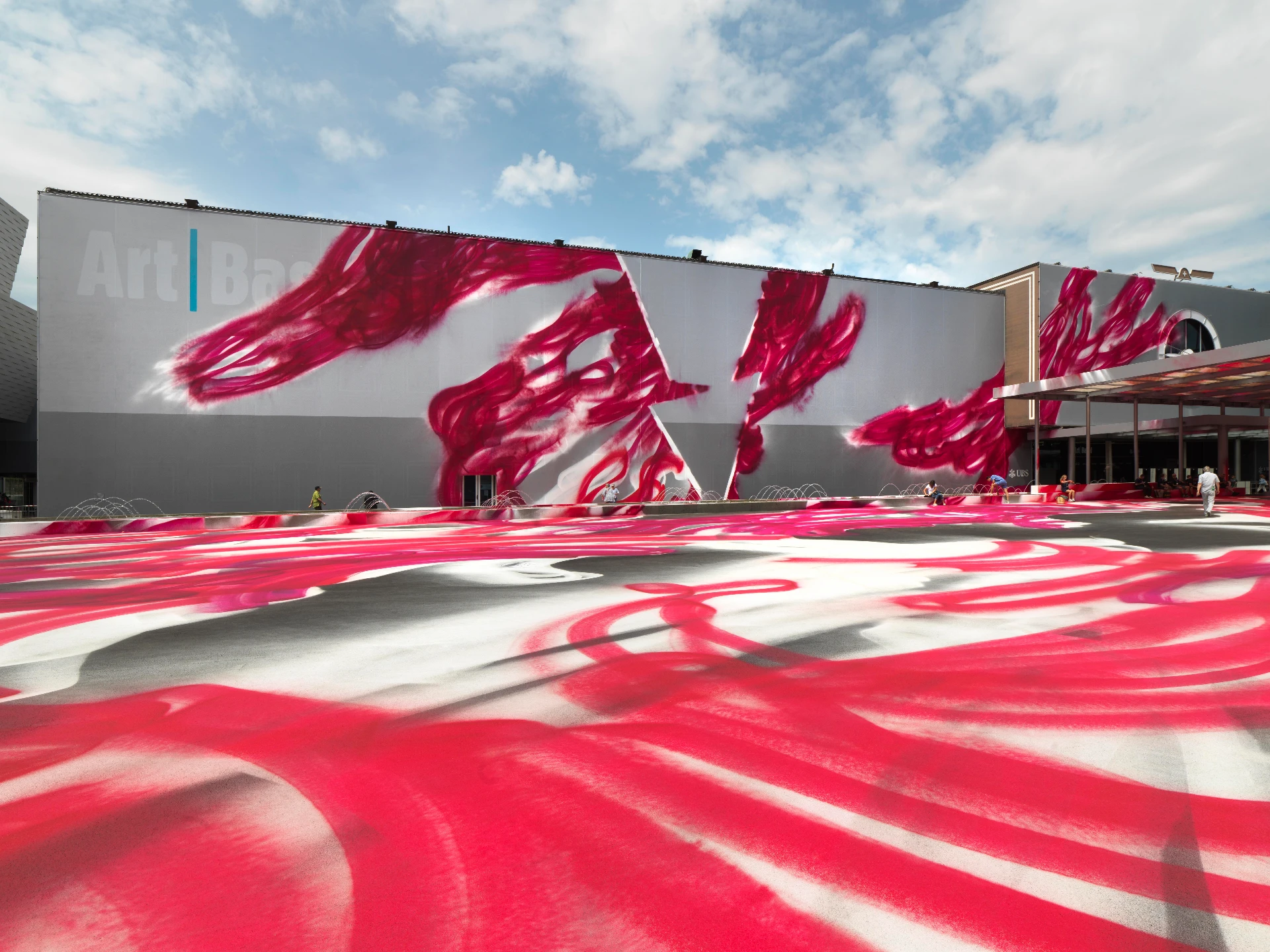
15 Jul 2025
The Art World, at Basel Art Week. Which world do we seek?
By Benedita Salema Roby
Related Posts
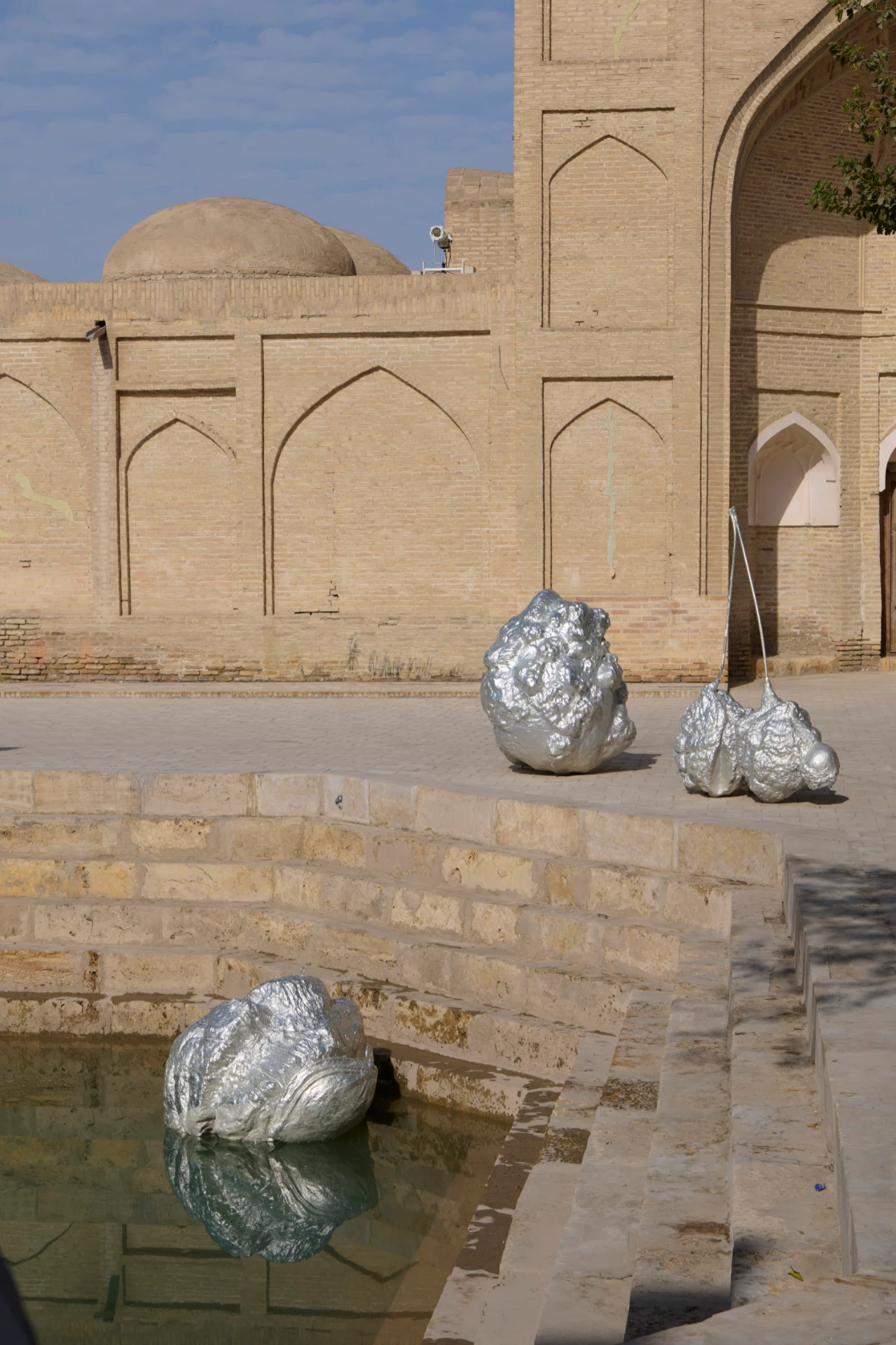
 [A] Chantal Akerman, [L] MAC-CCB-0028w.jpg)
